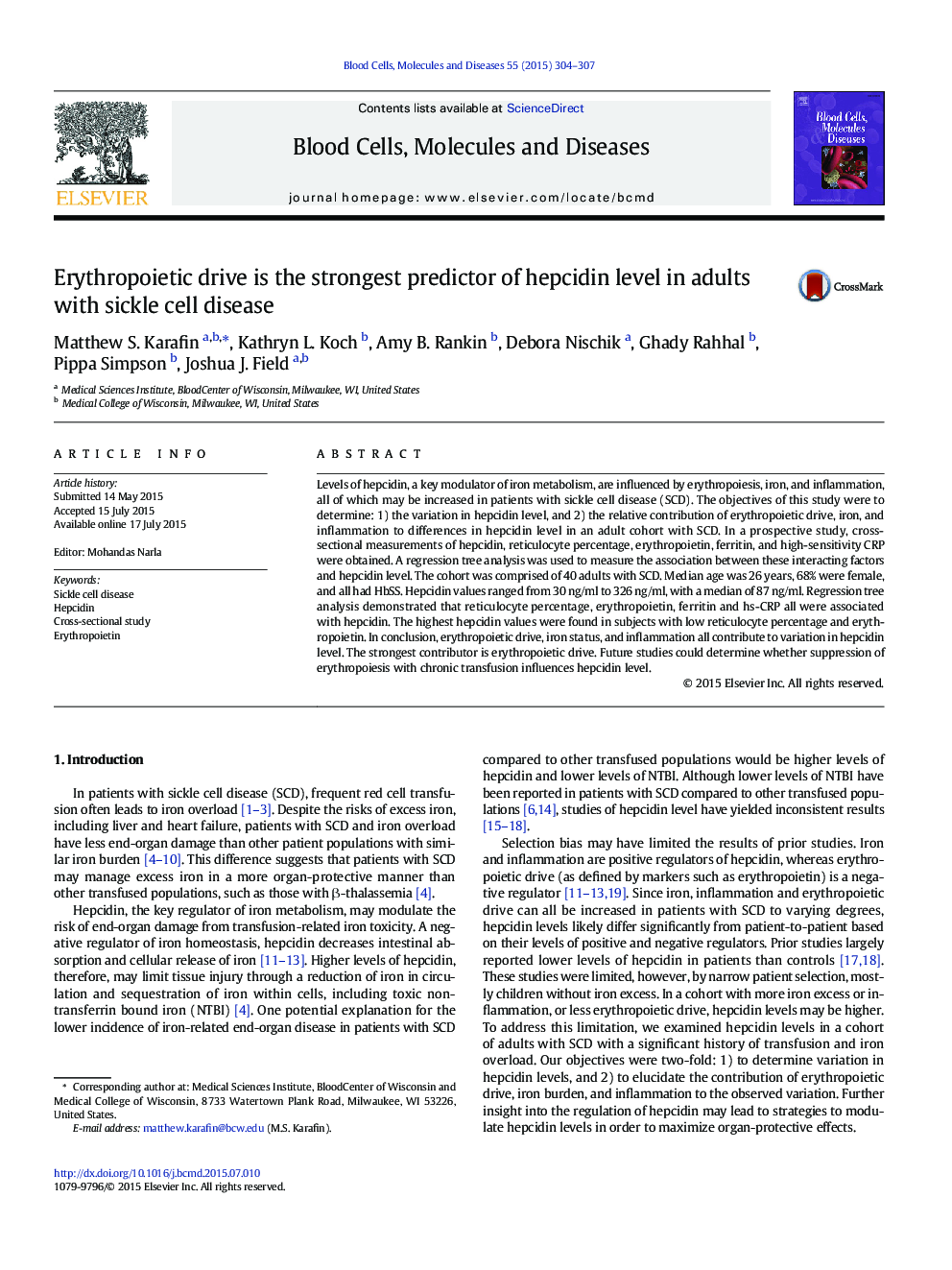| Article ID | Journal | Published Year | Pages | File Type |
|---|---|---|---|---|
| 2827170 | Blood Cells, Molecules, and Diseases | 2015 | 4 Pages |
Levels of hepcidin, a key modulator of iron metabolism, are influenced by erythropoiesis, iron, and inflammation, all of which may be increased in patients with sickle cell disease (SCD). The objectives of this study were to determine: 1) the variation in hepcidin level, and 2) the relative contribution of erythropoietic drive, iron, and inflammation to differences in hepcidin level in an adult cohort with SCD. In a prospective study, cross-sectional measurements of hepcidin, reticulocyte percentage, erythropoietin, ferritin, and high-sensitivity CRP were obtained. A regression tree analysis was used to measure the association between these interacting factors and hepcidin level. The cohort was comprised of 40 adults with SCD. Median age was 26 years, 68% were female, and all had HbSS. Hepcidin values ranged from 30 ng/ml to 326 ng/ml, with a median of 87 ng/ml. Regression tree analysis demonstrated that reticulocyte percentage, erythropoietin, ferritin and hs-CRP all were associated with hepcidin. The highest hepcidin values were found in subjects with low reticulocyte percentage and erythropoietin. In conclusion, erythropoietic drive, iron status, and inflammation all contribute to variation in hepcidin level. The strongest contributor is erythropoietic drive. Future studies could determine whether suppression of erythropoiesis with chronic transfusion influences hepcidin level.
